
Lieutenant-General Robert Stephenson Smyth Baden-Powell, 1st Baron Baden-Powell, was a British Army officer, writer, founder and first Chief Scout of the world-wide Scout Movement, and founder, with his sister Agnes, of the world-wide Girl Guide / Girl Scout Movement. Baden-Powell authored the first editions of the seminal work Scouting for Boys, which was an inspiration for the Scout Movement.
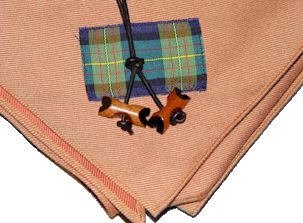
Wood Badge is a Scouting leadership programme and the related award for adult leaders in the programmes of Scout associations throughout the world. Wood Badge courses aim to make Scouters better leaders by teaching advanced leadership skills, and by creating a bond and commitment to the Scout movement. Courses generally have a combined classroom and practical outdoors-based phase followed by a Wood Badge ticket, also known as the project phase. By "working the ticket", participants put their newly gained experience into practice to attain ticket goals aiding the Scouting movement. The first Wood Badge training was organized by Francis "Skipper" Gidney and lectured at by Robert Baden-Powell and others at Gilwell Park in September 1919. Wood Badge training has since spread across the world with international variations.
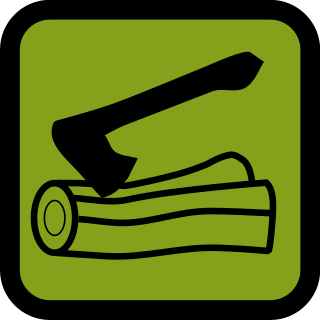
Gilwell Park is a camp site and activity centre in East London located in the Sewardstonebury area of Waltham Abbey, within Epping Forest, near the border with Chingford. The 109-acre (44 ha) site is owned by The Scout Association, is used by Scouting and Guiding groups. As the original base of leadership training in the Scout movement, it is an important site of the worldwide Scouting movement.

William Dickson Boyce was an American newspaper man, entrepreneur, magazine publisher, and explorer. He was the founder of the Boy Scouts of America (BSA) and the short-lived Lone Scouts of America (LSA). Born in Allegheny County, Pennsylvania, he acquired a love for the outdoors early in his life. After working as a schoolteacher and a coal miner, Boyce attended Wooster Academy in Ohio before moving to the Midwest and Canada. An astute businessman, Boyce successfully established several newspapers, such as The Commercial in Winnipeg, Manitoba, and the Lisbon Clipper in Lisbon, North Dakota. With his first wife, Mary Jane Beacom, he moved to Chicago to pursue his entrepreneurial ambitions. There he established the Mutual Newspaper Publishing Company and the weekly Saturday Blade, which catered to a rural audience and was distributed by thousands of newspaper boys. With his novel employment of newsboys to boost newspaper sales, Boyce's namesake publishing company maintained a circulation of 500,000 copies per week by 1894. Boyce strongly supported worker rights, as demonstrated by his businesses' support of labor unions and his concern for his newsboys' well-being.
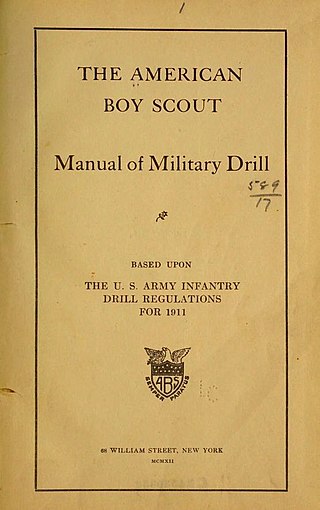
The American Boy Scouts (ABS), later the United States Boy Scouts, was an early American Scouting organization formed by William Randolph Hearst in 1910, following on from the formation of the Scouting movement by Robert Baden-Powell between 1903 and 1907. Near the end of its existence, the organization also used the names American Cadets and U.S. Junior Military Forces.
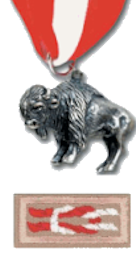
The Silver Buffalo Award is the national-level distinguished service award of the Boy Scouts of America. It is presented for noteworthy and extraordinary service to youth on a national basis, either as part of, or independent of the Scouting program. The award is made by the National Court of Honor and the recipient need not be a registered member of the BSA.
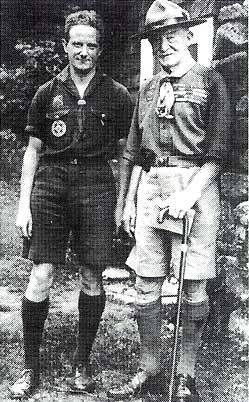
William Hillcourt, known within the Scouting movement as "Green Bar Bill", was an influential leader in the Boy Scouts of America (BSA) organization from 1927 to 1992. Hillcourt was a prolific writer and teacher in the areas of woodcraft, troop and patrol structure, and training; his written works include three editions of the BSA's official Boy Scout Handbook, with over 12.6 million copies printed, other Scouting-related books and numerous magazine articles. Hillcourt developed and promoted the American adaptation of the Wood Badge adult Scout leader training program.

James Edward West was a lawyer and an advocate of children's rights, who became the first professional Executive Secretary, soon renamed Chief Scout Executive, of the Boy Scouts of America (BSA), serving from 1911 to 1943. Upon his retirement from the BSA, West was given the title of Chief Scout.
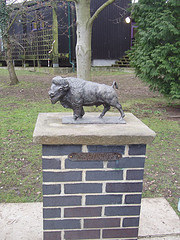
Scout spirit is an attitude that Scouts around the world are supposed to show, based on adherence to the ideals of Scouting. Scouting's founder, Baden Powell, once said, "The spirit is there in every boy; it has to be discovered and brought to light."
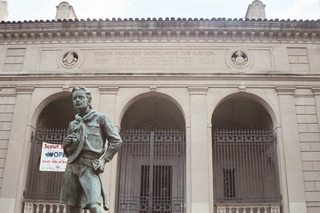
Scouting in the United States is dominated by the 1.2 million-member Boy Scouts of America and the Girl Scouts of the USA and other associations that are recognized by one of the international Scouting organizations. There are also a few smaller, independent groups that are considered to be "Scout-like" or otherwise Scouting related.

Queen's Gate House, still commonly known by its previous name of Baden-Powell House, is a conference centre in South Kensington, London. It was built as a tribute to Lord Baden-Powell, the founder of Scouting, and has served as the headquarters for The Scout Association, as a hostel providing modern and affordable lodging for Scouts, Guides, their families and the general public staying in London and as a conference and event venue.

The Boy Scouts of America (BSA) was inspired by and modeled on The Boy Scouts Association, established by Robert Baden-Powell in Britain in 1908. In the early 1900s, several youth organizations were active, and many became part of the BSA.
Edgar Munroe Robinson (1867–1951) was Boys' Work Secretary of the International Committee of the YMCA and a long-time director and executive with the YMCA in New York. He is notable for his significant efforts in helping to establish the Boy Scouts of America (BSA).

The Boy Rangers of America was a Scouting program in the United States for boys ages 8 through 12. It was organized on January 24, 1913 in Montclair, New Jersey by Emerson Brooks. Although independent of the Boy Scouts of America, it was the precursor of the BSA's Cubbing program now known as Cub Scouting.
Edward Leslie Rowan is a retired psychiatrist, sex therapist, active author, and Scouting leader from Exeter, New Hampshire. He has been associated with the Boy Scouts of America (BSA) for over 50 years and is a recipient of the Distinguished Eagle Scout Award (DESA) from the BSA in 1992.

B-P's footprint is a casting, usually in bronze or brass, of the right foot of Lord Baden-Powell, the founder of the Scout and Guide Movements, who is known as "B-P." The idea is that people may put their foot into this casting, so that they can say that they have "walked in the footsteps of B-P."
Percy Bantock Nevill, OBE,, known as P. B. Nevill, was an early Scoutmaster in the Boy Scout Movement and The Boy Scouts Association of the United Kingdom commissioner, long-term Headquarters Commissioner and later vice president.

The Statue of Robert Baden-Powell is a granite carving of Robert Baden-Powell, the founder of Scouting, at Baden-Powell House in Queen's Gate, South Kensington, London, England. The statue was created by the English sculptor Don Potter in 1960 and was installed and unveiled in 1961. It now stands in Gilwell Park, the home of Scouting, following the sale of Baden-Powell House in 2021.
















